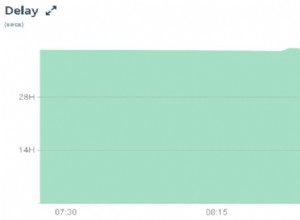Sulla base dei primi due requisiti, non c'è nulla di sbagliato nel tuo trigger di per sé, ma puoi semplificarlo notevolmente:
CREATE OR REPLACE FUNCTION timelog() RETURNS trigger AS $BODY$
DECLARE
t_ix real;
BEGIN
-- First check if you need to change NEW at all
IF (NEW.time_type = 'Start') OR (NEW.time_type = 'Lap') THEN
-- Now perform the expensive lookup for either of 'Start' or 'Lap'
SELECT time_index INTO t_ix
FROM table_ebscb_spa_log04
WHERE fn_name = NEW.fn_name
AND (time_type = 'Start' OR time_type = 'Lap')
ORDER BY stmtserial DESC LIMIT 1;
IF NOT FOUND THEN
-- Nothing found, so NEW.time_index := 1
NEW.time_index := 1;
ELSIF NEW.time_type = 'Start' THEN
-- Start new index for fn_name, discard any fractional part, then increment
NEW.time_index := floor(t_ix) + 1;
ELSE
-- Continue the lap, increment NEW.time_index
NEW.time_index := t_ix + 0.1;
END IF;
END IF;
RETURN NEW;
END; $BODY$ LANGUAGE plpgsql;
C'è un modo molto più semplice, tuttavia, che soddisferà anche il terzo requisito senza problemi. Piuttosto che guardare i valori "time_index", dovresti guardare il valore "time", perché questo è ciò su cui si basa "time_index":
CREATE OR REPLACE FUNCTION timelog() RETURNS trigger AS $BODY$
DECLARE
t_ix real;
BEGIN
-- Find the most recent entry for the same "fn_name" as the new record
SELECT time_index INTO t_ix
FROM table_ebscb_spa_log04
WHERE fn_name = NEW.fn_name
ORDER BY time DESC LIMIT 1;
-- Nothing found, so NEW.time_index := 1
IF NOT FOUND THEN
NEW.time_index := 1;
RETURN NEW;
END IF;
-- Some record exists, so update "time_index" based on previous record
CASE NEW.time_type
WHEN 'Start' THEN
-- Start new index for fn_name, discard any fractional part, then increment
NEW.time_index := floor(t_ix) + 1;
WHEN 'Lap' THEN
-- Continue the lap, increment NEW.time_index
NEW.time_index := t_ix + 0.1;
ELSE
-- Break, find previous break or start, increment by 0.1
SELECT time_index + 0.1 INTO NEW.time_index
FROM table_ebscb_spa_log04
WHERE fn_name = NEW.fn_name
AND (time_type = 'Start' OR time_type = 'Break')
ORDER BY time DESC LIMIT 1;
END CASE;
RETURN NEW;
END; $BODY$ LANGUAGE plpgsql;
Questo implementa la tua logica, ma tieni presente che ci sono alcune potenziali insidie:
- Cosa succede se inserisci un 'Lap' o una 'Break' prima di una 'Start'?
- Cosa succede se hai più di 9 eventi "fn_name" dopo un "Inizio" (la parte frazionaria ("time_index" passerà al numero intero successivo)?
Ovviamente potresti dimenticare del tutto il campo "time_index" e il trigger e generarlo al volo in una vista, se il tuo modello di dati lo consente (lo stesso con "time_elapse").




